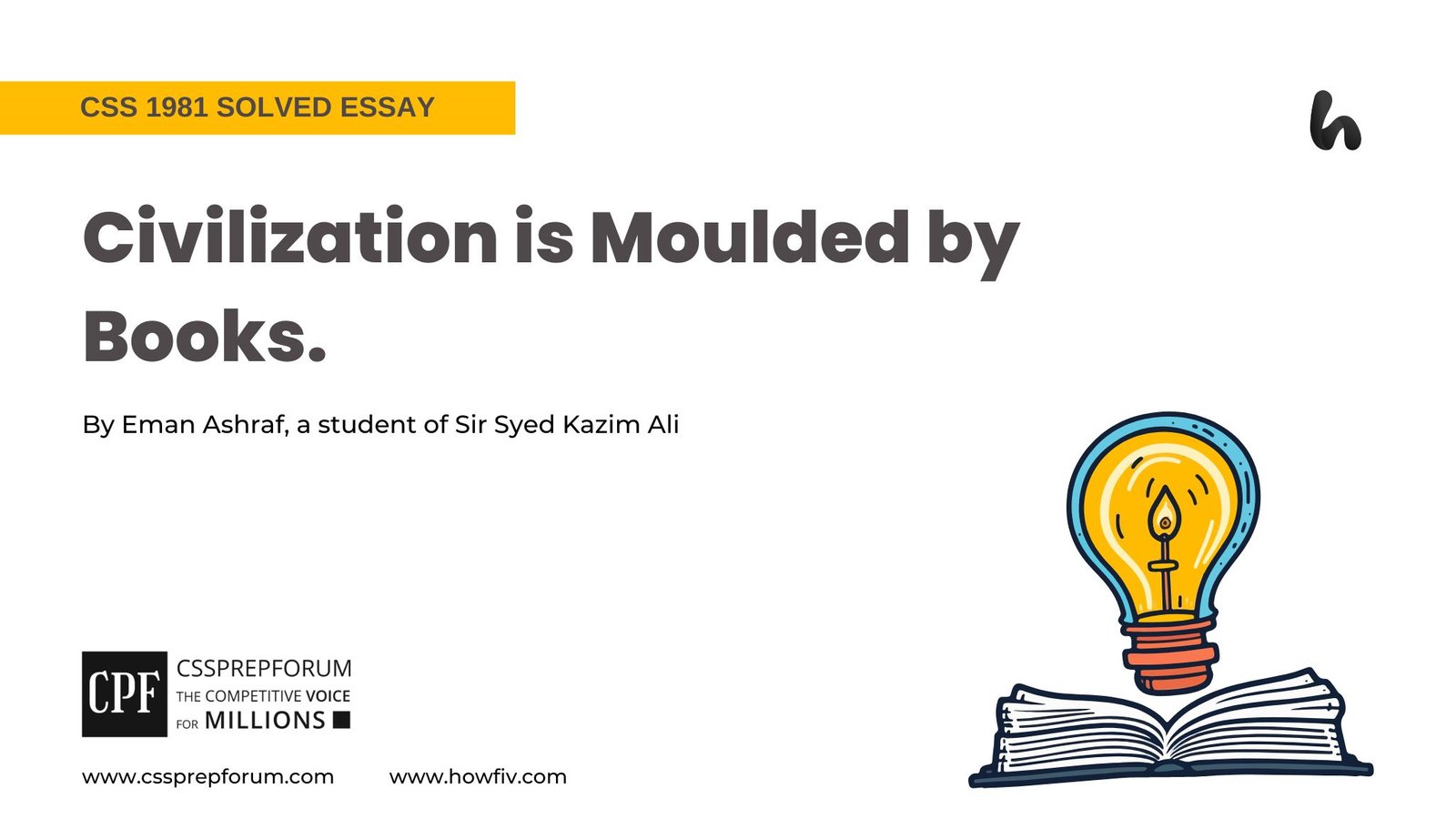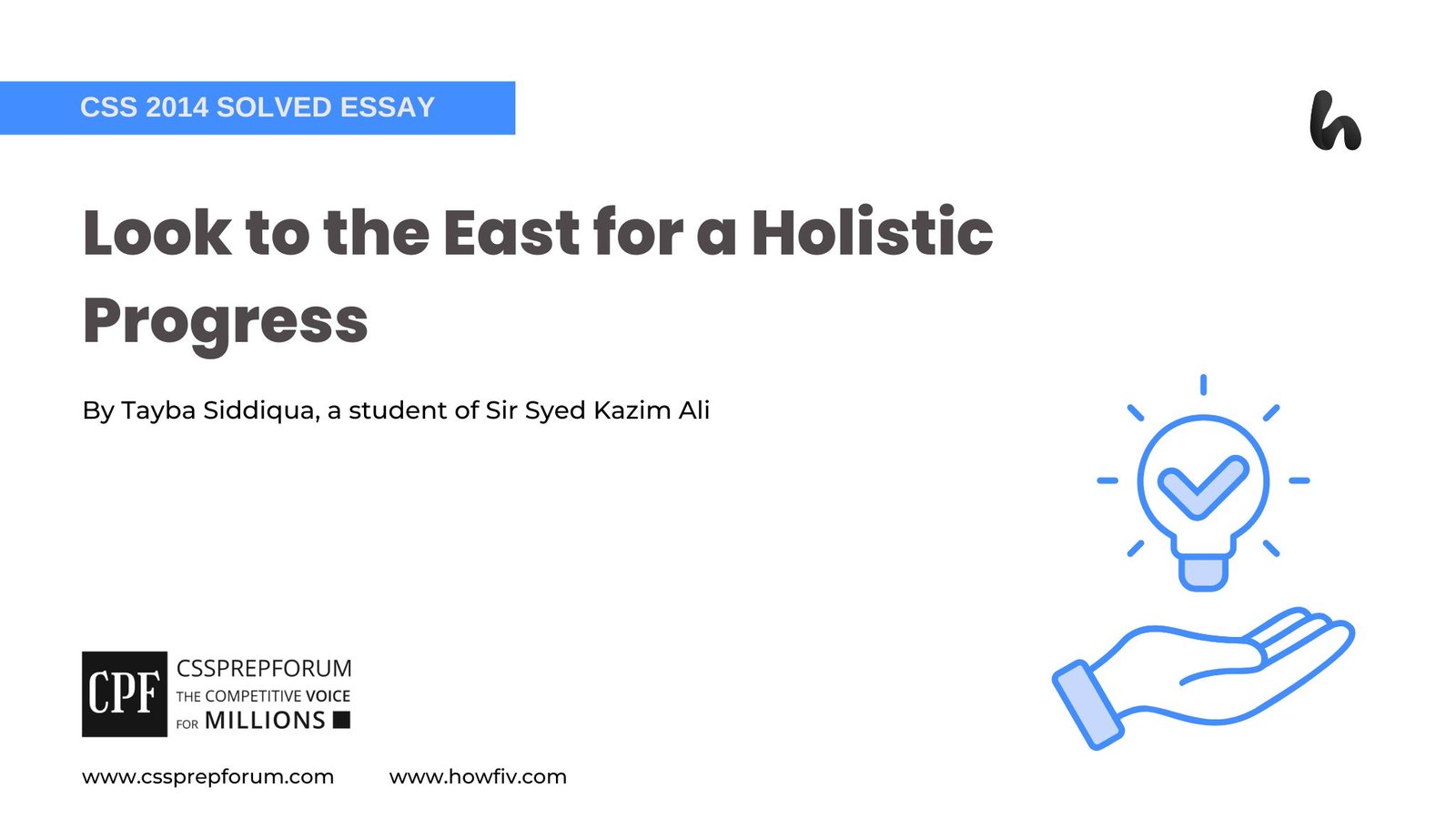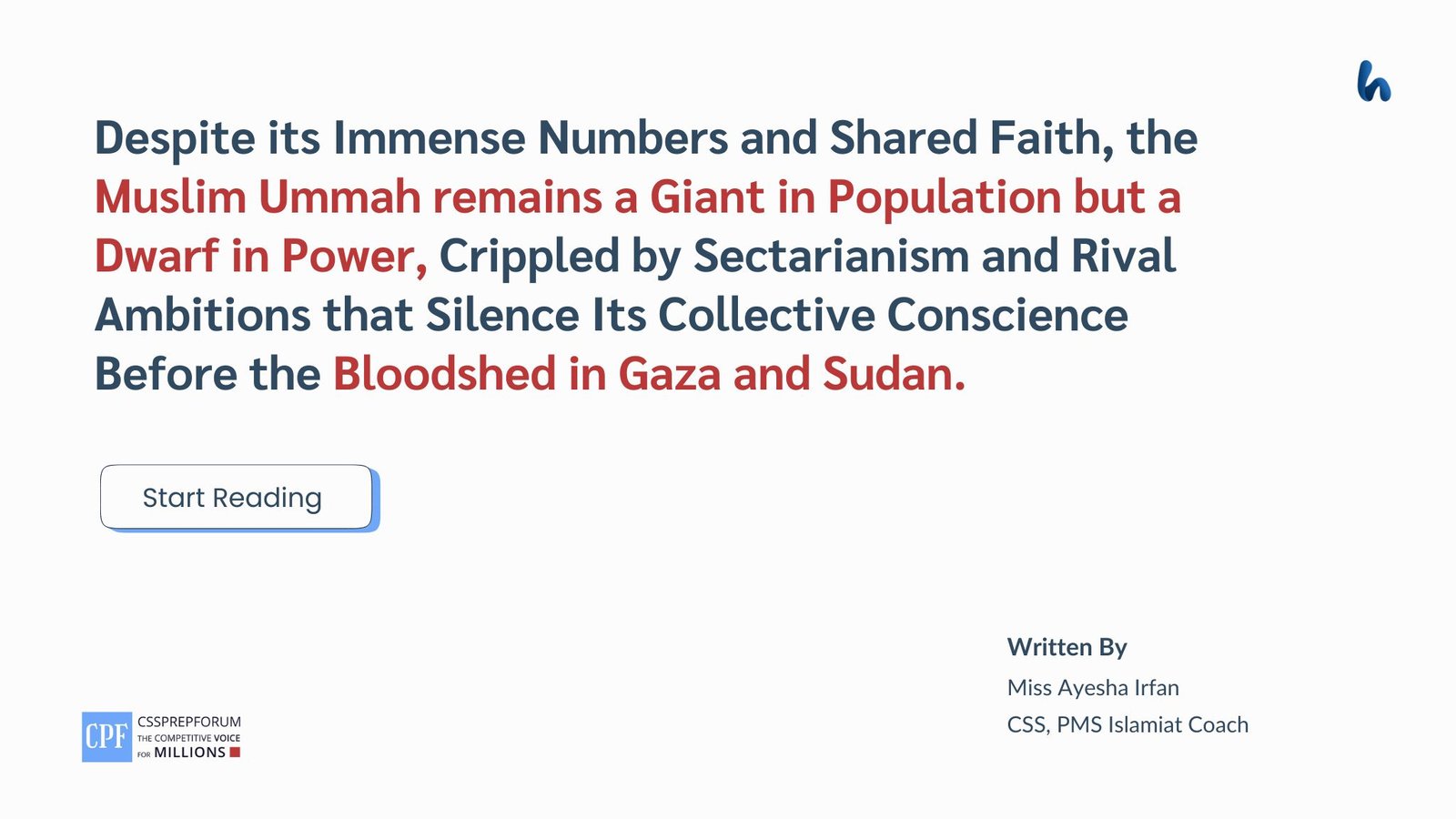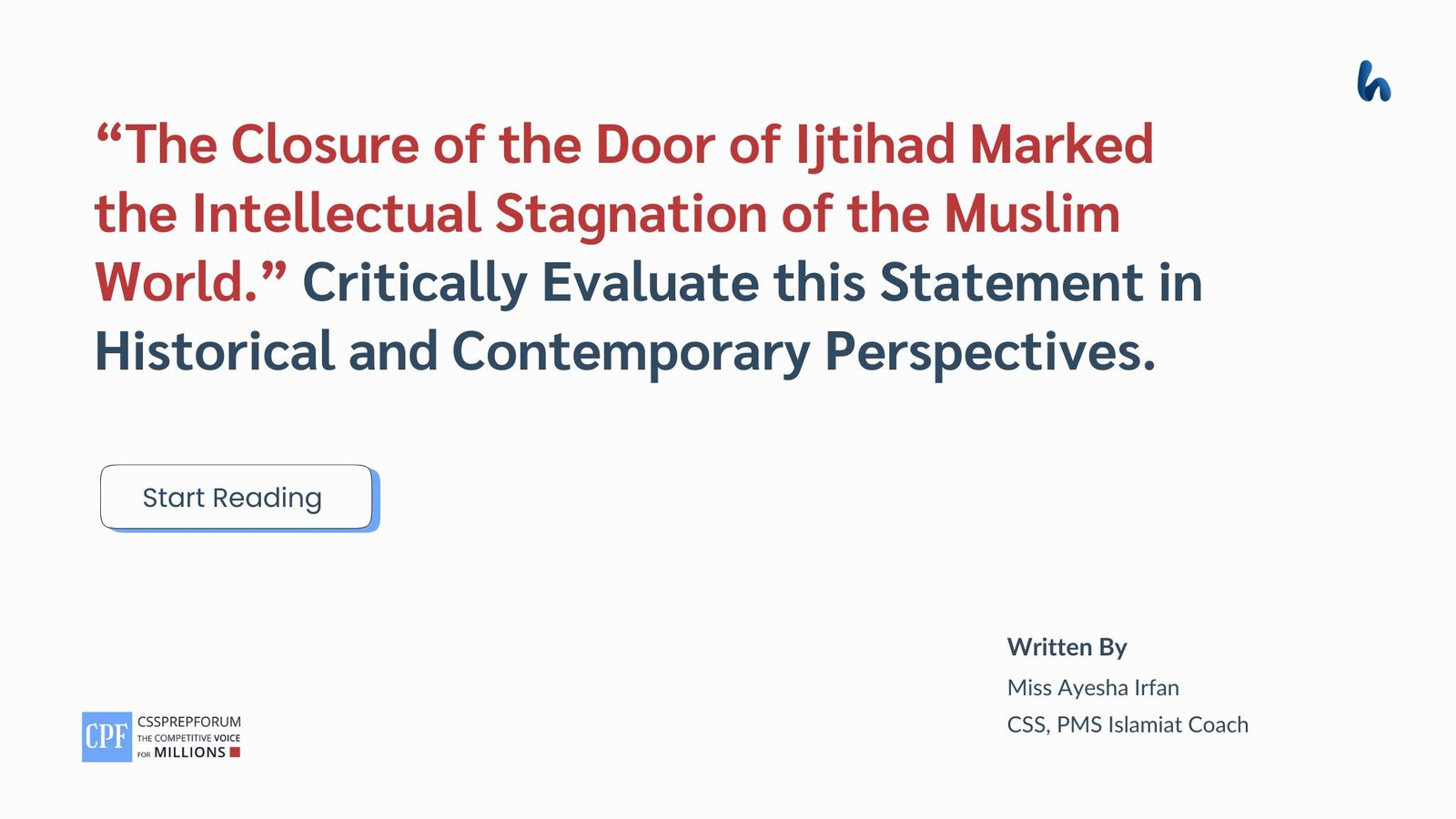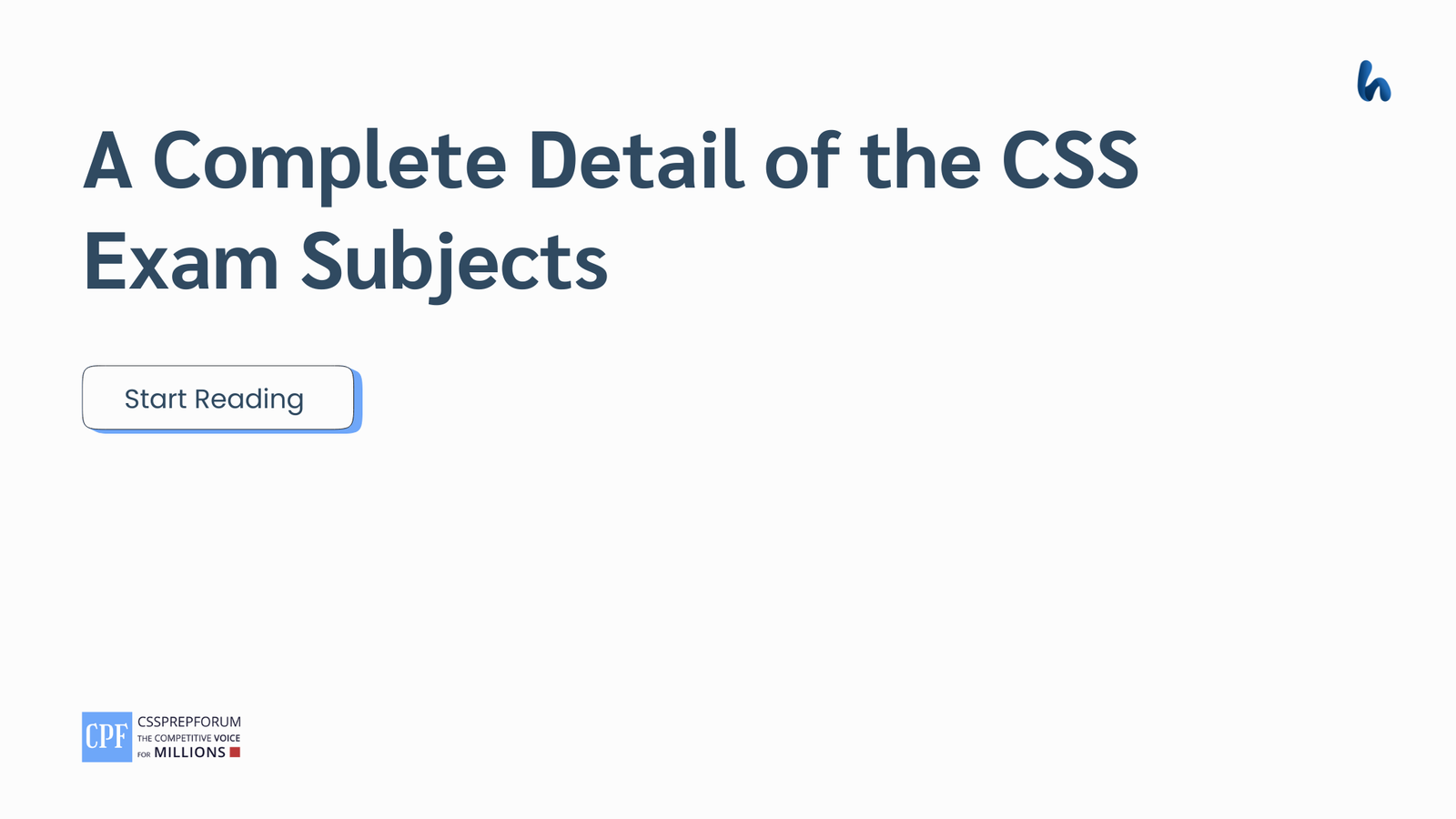CSS 2023 Solved Essay | The Cost of Inaction is Greater than the Cost of Action
Bilal Ahmad, a Sir Syed Kazim Ali student, has attempted the CSS 2023 essay “ The Cost of Inaction is Greater than the Cost of Action ” on the given pattern, which Sir Syed Kazim Ali teaches his students. Sir Syed Kazim Ali has been Pakistan’s top English writing and CSS, PMS essay and precis coach with the highest success rate of his students. The essay is uploaded to help other competitive aspirants learn and practice essay writing techniques and patterns to qualify for the essay paper.
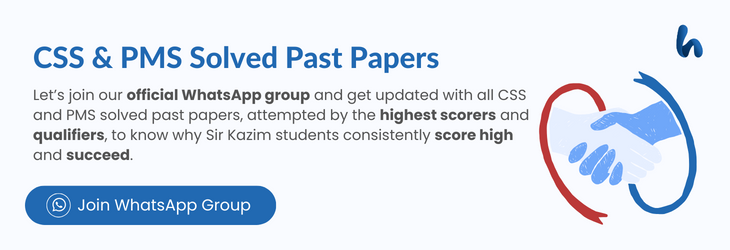
Outline
1- Introduction
- ✓ The proverbial saying “the cost of inaction is greater than the cost of action” holds true in the face of critical challenges and pressing issues that permeate the fabric of society.
- ✓ As societies grapple with complex challenges, they are often confronted with the pivotal choice between action and inaction.
- ✓ The axiom holds true across a multitude of spheres, be it in the realm of politics, economics, environmental stewardship, or personal growth.
2- Contextualizing the proverb “The cost of inaction is greater than the cost of action”
3- How is the cost of inaction greater than the cost of action?
- ✓ Climate perspective
- Evidence: According to the World Bank report, by 2050, the world could face an additional 100 million people in poverty due to climate change-induced effects, exacerbating social inequalities and increasing the strain on social safety nets.
- ✓ Economic perspective
- Evidence: Researchers from the International Monetary Fund (IMF) have investigated scenarios where inaction, whether in response to market fluctuations or policy challenges, can exacerbate economic downturns and deepen financial crises.
- ✓ Education perspective
- Evidence: According to a report by the McKinsey Global Institute, if education systems do not adapt to meet the demands of the future workforce, there could be trillions of dollars in lost global GDP by 2030.
- ✓ Healthcare perspective
- Evidence: For instance, failure to address outbreaks promptly can result in rapid disease spread and strain on healthcare resources.
- ✓ Technological perspective
- Evidence: According to the report of the World Economic Forum (WEF), countries that have embraced technological progress have witnessed remarkable economic growth, job creation, and an improved quality of life for their citizens.
- ✓ Political perspective
- Evidence: A pertinent example of the cost of inaction is evident in the Arab Spring, which swept across the Middle East and North Africa in 2011.
- ✓ Cyber security perspective
- Evidence: According to a report by the International Telecommunication Union (ITU) in 2022, around 80 per cent of countries lack the necessary cyber security strategies, indicating a widespread vulnerability that can be addressed through proactive actions.
4- Why timely decision-making pays off as a beneficial choice?
- ✓ Improve resource management
- ✓ Competitive advantage
- ✓ Reduce stress and anxiety
- ✓ Seizing opportunities
- ✓ Enhanced Adaptability
5- Critical Analysis
6- Conclusion

Essay
The proverbial saying “the cost of inaction is greater than the cost of action” holds true in the face of critical challenges and pressing issues that permeate the fabric of society. As societies grapple with complex challenges, they are often confronted with the pivotal choice between action and inaction. While the allure of maintaining the status quo may seem inviting, history has repeatedly demonstrated that the cost of inaction can far exceed the perceived comfort of maintaining familiar ground. The axiom holds true across many spheres, be it in politics, economics, environmental stewardship, or personal growth. Indeed, the repercussions of inaction can manifest in insidious and far-reaching ways, leading to missed opportunities, stunted progress, and dire consequences for future generations. Moreover, political expediency or fear of change often drives decisions to postpone or avoid addressing pressing issues, leading to mounting challenges that eventually spiral out of control. Whether it is the reluctance to address widening income inequality, climate change, or systematic justice, the failure to act in the face of such pressing concerns can lead to societal upheaval, heightened tensions, and the erosion of trust in institutions. Hence, this principle is evident in historical and contemporary challenges, demonstrating that the burden of regret resulting from missed opportunities or a failure to address pressing issues can be far more severe than the uncertainties and challenges accompanying action.
To begin with, it is crucial to grasp the essence of the proverb: the cost of inaction is greater than the cost of action. Choosing not to take action can lead to significant negative consequences that outweigh the potential costs of taking action. Inaction often allows problems to escalate and worsen, resulting in greater challenges and expenses in the long run. Whether in personal, business, or societal contexts, addressing issues promptly can prevent further damage and foster positive outcomes. By taking proactive steps, one can mitigate risks, seize opportunities, and achieve more favorable results, making the cost of action a worthwhile investment compared to the higher toll of inaction.
While the immediate cost of taking action may seem daunting, the consequences of inaction prove to be far more burdensome in the long run. To begin with, in the context of climate change, the cost of inaction refers to the consequences and damages that result from failing to take significant measures to mitigate and adapt to the changing climate. Failing to take significant steps to mitigate climate change can lead to devastating consequences that far surpass the expenses associated with proactive measures. Rising global temperatures would accelerate, causing more frequent and intense heatwaves, extreme weather events, and disruptions to ecosystems. According to the World Bank report, by 2050, the world could face an additional 100 million people in poverty due to climate change-induced effects, exacerbating social inequalities and increasing the strain on social safety nets. Hence, climate action that prioritizes equity and inclusivity can help build resilience in disadvantaged communities and foster social cohesion, ultimately reducing the societal costs of climate change.
Moreover, economies are dynamic systems that constantly require vigilant management and adaptation. A key aspect of this management lies in identifying the appropriate moments to act and the perils of inaction. When facing critical economic challenges, the cost of action might initially seem burdensome, deterring policymakers and businesses from intervening. However, failure to act in a timely and strategic manner can lead to missed opportunities, escalating problems, and long-term economic consequences that are far more detrimental. Researchers from the International Monetary Fund (IMF) have investigated scenarios where inaction, whether in response to market fluctuations or policy challenges, can exacerbate economic downturns and deepen financial crises. Hence, it encourages decision makers to factor in not only the immediate financial implications but also the potential cascading effects that inaction can generate, ultimately emphasizing the need for proactive measures to avoid larger economic setback.
In addition, in the realm of education, the adage “The cost of inaction is greater than the cost of action” emphasizes the critical importance of proactive measures and timely interventions. Failing to take appropriate actions in education can lead to far-reaching consequences that outweigh the challenges of addressing issues upfront. When educators neglect to identify and address learning difficulties early on, students might struggle academically, leading to diminished self-confidence and disengagement from learning. This inaction can result in a vicious cycle of poor performance, affecting their long-term education and career prospects. According to a report by the McKinsey Global Institute, if education systems do not adapt to meet the demands of the future workforce, there could be trillions of dollars in lost global GDP by 2030. Hence, the cost of inaction in education involves the potential loss of human potential, missed opportunities for growth, and diminished societal progress.
Going down the ladder, in a healthcare context, “the cost of inaction is greater than the cost of action” underscores the critical importance of timely and proactive intervention. When healthcare decisions are delayed or deferred, the potential consequences can lead to exacerbated health issues, reduced treatment efficiency, and increased financial burdens. For instance, failure to address outbreaks promptly can result in rapid disease spread and strain on healthcare resources. Vaccination campaigns and early containment measures are vital to prevent epidemics from spiraling out of control, saving lives and limiting economic impact. Thus, the saying highlights that taking proactive steps, even if they appear costly, can prevent more significant harm and expenses down the line.
Besides, in an ever-evolving world driven by technological advancement, the cost of inaction has emerged as a pressing concern that demands our attention. History is riddled with instances where societies and individuals hesitated to embrace progress, fearing the potential risks and uncertainties that accompany change. However, what often remains overlooked is the toll that inaction takes on humanity’s ability to thrive and flourish. Inaction often results in missed opportunities. Neglecting to invest in research, development, and the adoption of new technologies can lead to stagnation and the inability to keep pace with competitors. This, in turn, diminishes market relevance and growth potential, potentially leading to long-term financial losses. According to the report of the World Economic Forum (WEF), countries that have embraced technological progress have witnessed remarkable economic growth, job creation, and an improved quality of life for their citizens. So, embracing innovation might entail initial expenses, but the potential gains in terms of market share, operational efficiency, and sustainable growth far outweigh the drawbacks of standing still.
In addition, in the realm of political instability, the decision to act or remain inactive carries profound consequences. As the world faces ever-mounting challenges, the cost of inaction has emerged as a specter, threatening to unravel the delicate fabric of societies. Political instability often involves social unrest, economic disruption, and potential violence, which can have far-reaching negative effects on a nation and its citizens. By not taking action to address the underlying causes of instability, such as economic inequality, corruption, or lack of representation, governments risk allowing tensions to escalate. A pertinent example of the cost of inaction is evident in the Arab Spring, which swept across the Middle East and North Africa in 2011. The failure of governments in the region to respond to widespread public grievances regarding unemployment, political repression, and lack of representation resulted in widespread protests and uprisings.
Last but not least, in today’s rapidly advancing digital landscape, the importance of cyber security cannot be overstated. As technology continues to play a pivotal role in nearly every aspect of our lives, the potential consequences of inaction in this realm are increasingly significant. With cyber threats becoming more sophisticated and prevalent, organizations and individuals must recognize that the cost of inaction is far greater than the cost of action when it comes to cyber security. Cyber threats, ranging from data breaches to ransom ware attacks, are constantly evolving in sophistication and scale. Neglecting cyber security measures can expose organizations to severe financial losses, reputational damage, legal liabilities, and compromised customer trust. The expenses associated with data recovery, incident response, legal proceedings, and potential regulatory fines are significantly higher than the upfront costs of implementing robust cyber security protocols. According to a report by the International Telecommunication Union (ITU) in 2022, around 80 per cent of countries lack the necessary cyber security strategies, indicating a widespread vulnerability that can be addressed through proactive actions. Hence, failing to take appropriate measures to safeguard sensitive data and critical infrastructure not only exposes one to financial losses but also jeopardizes privacy, trust, and the overall stability of the world.
In a fast-paced and ever-changing world, timely decision-making holds immense value as it can lead to significant benefits over the cost of inaction. To begin with, timely decision-making is a crucial aspect of successful resource management and offers numerous benefits to governments, organizations, and individuals alike. When decisions are made promptly, it allows for efficient allocation and utilization of resources, maximizing their potential impacts. By acting swiftly, organizations can seize opportunities, address challenges, and adapt to changing circumstances with agility. So, proactive resource management not only increases productivity but also fosters a culture of innovation and progress within the organization.
Moreover, in today’s fast-paced and competitive business landscape, timely decision-making has become a crucial factor in determining a company’s success and maintaining a competitive advantage. With markets evolving rapidly, organizations that can make informed choices quickly are better positioned to seize emerging opportunities and respond to change. Thus, timely decisions enable businesses to stay ahead of the curve, adapt to changing trends, and capitalize on new market developments.
In addition, timely decision-making is a crucial skill that can greatly benefit individuals by reducing stress and anxiety. When one promptly addresses challenges and makes choices without unnecessary delays, one avoids the burden of prolonged uncertainty. Procrastination can amplify feelings of stress as the weight of pending decisions looms, leading to anxiety and restlessness. On the other hand, swift decision-making empowers one to take charge of his life and tackle problems head-on. Hence, the sense of control and accomplishment gained from making timely choices contributes to a calmer state of mind, creating a positive cycle of reduced stress and increased well-being.
Further, seizing opportunities is a critical benefit of timely decision-making, as it empowers individuals and organizations to capitalize on favorable circumstances, maximize potential gains, and drive progress. In a rapidly evolving world where change is constant, the window for advantageous prospects is often limited. Making decisions promptly enhances the ability to align with the currents of change and secure a competitive edge. Moreover, seizing opportunities through timely decisions can result in cascading positive impacts. It can boost morale and foster a culture of adaptability and resourcefulness, encouraging teams to be aligned and responsive. Hence, the ability to recognize and act on opportunity swiftly is a testament to effective decision-making, enabling individuals and organizations to navigate change with confidence and reap the rewards of foresight and agility.
Last but not least, enhanced adaptability stands as a pivotal advantage resulting from timely decision-making. When decisions are made promptly, they enable individuals, organizations, and even systems to respond proactively to changing circumstances and evolving challenges. The swift analysis and choice-making process foster a mindset for a rapidly evolving world. Timely decisions empower individuals and organizations to anticipate potential shifts in the environment, allowing them to adjust strategies, plans, and actions swiftly. This agility ensures that one can capitalize on emerging opportunities and navigate unforeseen obstacles with relative ease. The ability to pivot based on well-timed decisions also minimizes the detrimental effects of indecision, reducing wasted resources, time, and energy.
To articulate critically, the concept that “the cost of inaction is greater than the cost of action” highlights the risks of passivity in decision-making. By refraining from taking action, individuals or organizations may avoid more severe consequences in the long run. Procrastination, missed opportunities, and unresolved problems can lead to compounded challenges. On the contrary, timely and proactive measures can prevent further escalation and mitigate potential losses. Embracing this principle encourages responsible and strategic decision-making, acknowledging that inaction can ultimately result in far higher costs than the immediate effort required for taking action.
In conclusion, the cost of inaction far outweighs the cost of action. Failing to take decisive steps to address pressing issues not only perpetuates problems but also leads to compounding consequences. Whether they are environmental, social, or economic challenges, neglecting action results in irreversible damage and missed opportunities for growth and improvement. Embracing proactive measures, on the other hand, empowers one to mitigate risks, find innovative solutions, and secure a more sustainable future. Taking timely action demonstrates the wisdom of investing in prevention rather than dealing with the aftermath of neglect. Ultimately, choosing to act decisively is not only more economical but also crucial for a thriving and resilient world.
CSS Solved Past Papers’ Essays
Looking for the last ten years of CSS and PMS Solved Essays and want to know how Sir Kazim’s students write and score the highest marks in the essays’ papers? Then, click on the CSS Solved Essays to start reading them. CSS Solved Essays
CSS 2023 Solved Essays
Are you searching for CSS 2023 solved essays by Sir Syed Kazim Ali’s students? Click on any of the topics to start reading the solved essays.
| 1- Instruction in youth is like engraving in stone |
| 2- The one who uses force is afraid of reasoning |
| 3- Not all recycling projects are cost-effective |
| 4- The fool speaks, and the wise listen |
| 5- A friend walks in when everyone else walks out |
| 6- Online learning is not only convenient but often more effective than traditional classroom instruction |
| 7- To encourage healthy eating, higher taxes should be imposed on soft drinks and junk food |
| 8- People have become overly dependent on technology |
| 9- Both parents should assume equal responsibility in raising a child |
| 10- Boys will be boys |
CSS Solved General Science & Ability Past Papers
Want to read the last ten years’ General Science & Ability Solved Past Papers to learn how to attempt them and to score high? Let’s click on the link below to read them all freely. All past papers have been solved by Miss Iqra Ali & Dr Nishat Baloch, Pakistan’s top CSS GSA coach having the highest score of their students. General Science & Ability Solved Past Papers
Articles Might Interest You!
The following are some of the most important articles for CSS and PMS aspirants. Click on any to start reading.


